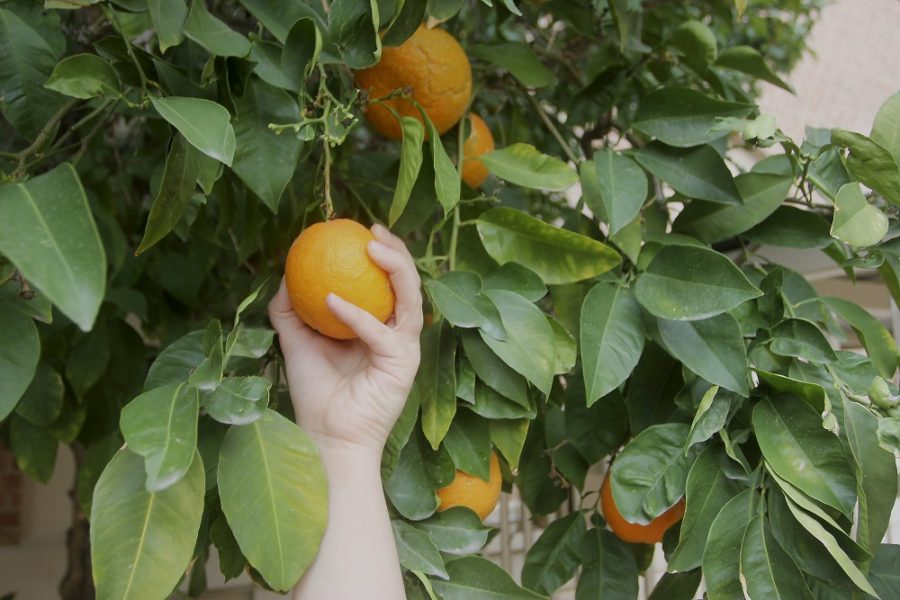Numerous orange trees add color and fragrance to campus. But before plucking a plump fruit from a low-hanging branch on the way to class, be warned that the fruit may upset your stomach.
“Oh, dang! That is really sour,” said Jeremy Poedel, an art education junior, after he sampled an orange from one of the trees on campus.
Poedel said he had wanted to try the oranges he saw on campus since his freshman year. When he finally did, the grayish color inside looked more like that of a lemon than any orange from a grocery store. Even though the orange trees are visually appealing, Poedel said it was “the worst orange I’ve ever eaten in my life.”
There are nine different species of citrus on campus, including key limes from East Asia, grapefruit from the Caribbean and kumquats. But Glenn Wright, cooperative extension specialist in citrus and date palms, said to be cautious if you eat one of the UA’s oranges. Though some of the species such as the eating orange and dwarf orange are edible, most are highly acidic. Wright said he certainly “wouldn’t pick one off the ground.”
Wright said Tucson’s climate is generally too cold to grow citrus trees because some can’t survive the crisp early mornings and nights. The trees planted around campus are protected by extra heat given off by surrounding buildings, but the climate still affects their taste. Wright explained that warmer climates make oranges sweeter. For this reason, students at Arizona State University’s Tempe campus are able to eat the oranges grown on their campus. In fact, ASU also practices sustainability by harvesting its citrus for marmalades and juice for restaurants on campus.
Officials at the UA practice sustainability by grinding fallen pods from mesquite trees on campus into flour, which is used by Arizona Student Unions’ restaurants. But when it comes to citrus, it seems that our oranges are more decorative than practical.
The orange trees help make the UA one of the most beautiful campuses in the country — but that’s pretty much their only purpose. So before biting into the fruit, you may want to remember Poedel’s experience and spare yourself from a sour stomach.









